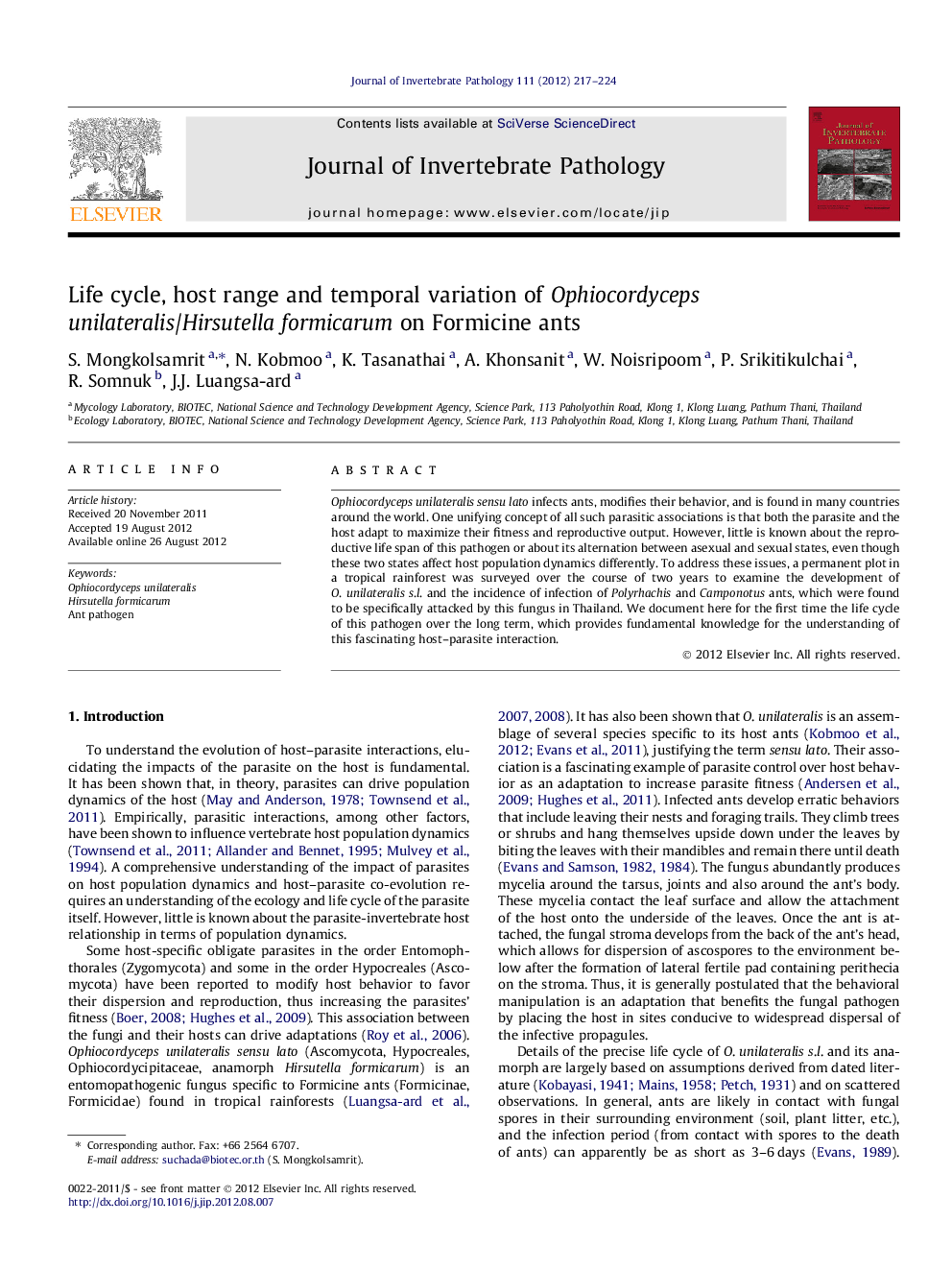| Article ID | Journal | Published Year | Pages | File Type |
|---|---|---|---|---|
| 4557862 | Journal of Invertebrate Pathology | 2012 | 8 Pages |
Ophiocordyceps unilateralis sensu lato infects ants, modifies their behavior, and is found in many countries around the world. One unifying concept of all such parasitic associations is that both the parasite and the host adapt to maximize their fitness and reproductive output. However, little is known about the reproductive life span of this pathogen or about its alternation between asexual and sexual states, even though these two states affect host population dynamics differently. To address these issues, a permanent plot in a tropical rainforest was surveyed over the course of two years to examine the development of O. unilateralis s.l. and the incidence of infection of Polyrhachis and Camponotus ants, which were found to be specifically attacked by this fungus in Thailand. We document here for the first time the life cycle of this pathogen over the long term, which provides fundamental knowledge for the understanding of this fascinating host–parasite interaction.
Graphical abstractFigure optionsDownload full-size imageDownload as PowerPoint slideHighlights► We examined life cycle of Ophiocordyceps unilateralis sensu lato attacking Polyrhachis and Camponotus ants. ► O. unilateralis s.l. has a seasonal pattern with peaks in rainy and dry season. ► Development stroma of fungus through several cycles of Dead Ant-Stroma-Perithecia.
